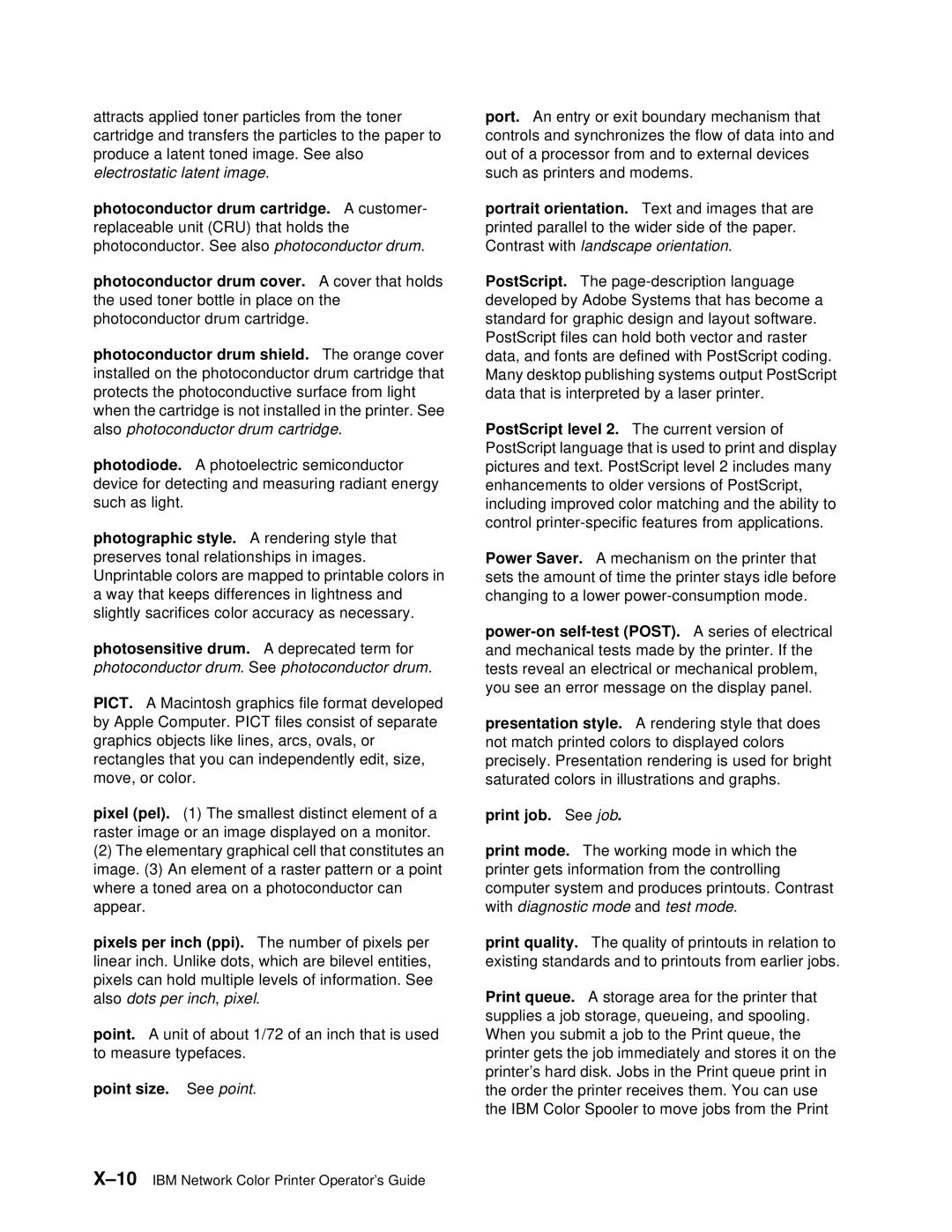attracts applied toner particles from the toner cartridge and transfers the particles to the paper to produce a latent toned image. See also electrostatic latent image.
photoconductor drum cartridge. A customer- replaceable unit (CRU) that holds the photoconductor. See also photoconductor drum.
photoconductor drum cover. A cover that holds the used toner bottle in place on the photoconductor drum cartridge.
photoconductor drum shield. The orange cover installed on the photoconductor drum cartridge that protects the photoconductive surface from light when the cartridge is not installed in the printer. See also photoconductor drum cartridge.
photodiode. A photoelectric semiconductor device for detecting and measuring radiant energy such as light.
photographic style. A rendering style that preserves tonal relationships in images. Unprintable colors are mapped to printable colors in a way that keeps differences in lightness and slightly sacrifices color accuracy as necessary.
photosensitive drum. A deprecated term for photoconductor drum. See photoconductor drum.
PICT. A Macintosh graphics file format developed by Apple Computer. PICT files consist of separate graphics objects like lines, arcs, ovals, or rectangles that you can independently edit, size, move, or color.
pixel (pel). (1) The smallest distinct element of a raster image or an image displayed on a monitor.
(2)The elementary graphical cell that constitutes an image. (3) An element of a raster pattern or a point where a toned area on a photoconductor can appear.
pixels per inch (ppi). The number of pixels per linear inch. Unlike dots, which are bilevel entities, pixels can hold multiple levels of information. See also dots per inch, pixel.
point. A unit of about 1/72 of an inch that is used to measure typefaces.
point size. See point.
port. An entry or exit boundary mechanism that controls and synchronizes the flow of data into and out of a processor from and to external devices such as printers and modems.
portrait orientation. Text and images that are printed parallel to the wider side of the paper. Contrast with landscape orientation.
PostScript. The
PostScript level 2. The current version of PostScript language that is used to print and display pictures and text. PostScript level 2 includes many enhancements to older versions of PostScript, including improved color matching and the ability to control
Power Saver. A mechanism on the printer that sets the amount of time the printer stays idle before changing to a lower
presentation style. A rendering style that does not match printed colors to displayed colors precisely. Presentation rendering is used for bright saturated colors in illustrations and graphs.
print job. See job.
print mode. The working mode in which the printer gets information from the controlling computer system and produces printouts. Contrast with diagnostic mode and test mode.
print quality. The quality of printouts in relation to existing standards and to printouts from earlier jobs.
Print queue. A storage area for the printer that supplies a job storage, queueing, and spooling. When you submit a job to the Print queue, the printer gets the job immediately and stores it on the printer’s hard disk. Jobs in the Print queue print in the order the printer receives them. You can use the IBM Color Spooler to move jobs from the Print
